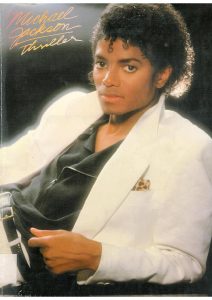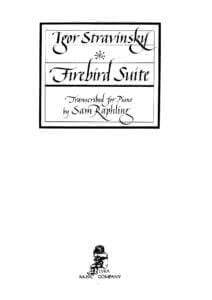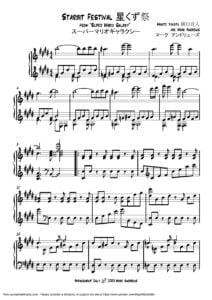Table of Contents
Quincy Jones dies at 91.
Quincy Jones died this Sunday at the age of 91 at his home in Bel Air (Los Angeles) surrounded by his family. His figure is undoubtedly one of the most influential in the history of contemporary music, with important weight in various genres and fields. His work not only resonates in genres such as jazz, soul, and pop, but also in areas such as musical production, changing the way of understanding the role of the producer as a sound architect.
Please, subscribe to our Library.
If you are already a subscriber, please, check our NEW SCORES’ page every month for new sheet music. THANK YOU!
Quincy Delight Jones, Jr. began his career as a trumpeter and arranger in the 1950s, during which time he worked with jazz greats such as Count Basie and Dizzy Gillespie. His ability for orchestral arrangements allowed him to experiment combining jazz with African-American rhythms and elements of classical music, which not only earned him recognition in his time, but also paved the way for him in musical production and direction. It was at this stage where he befriended iconic figures such as Ray Charles, Miles Davis and Billie Holiday , and in 1956 he undertook a tour as trumpeter for the aforementioned Dizzy Gillespie.

He lived in Paris, where he studied composition with the renowned Nadia Boulanger and Olivier Messiaen . In the French capital, he collaborated with renowned figures such as Leonard Bernstein and worked at Barclay Records, establishing himself as musical director and arranger. In 1961, back in New York, he was named vice president of Mercury Records, becoming one of the first African Americans to hold a senior position in the industry. His success as a producer included collaborations with artists such as Peggy Lee and Sarah Vaughan , and in 1963 he won his first Grammy for the arrangements of “I Can’t Stop Loving You” by the Count Basie Orchestra.

Best Sheet Music download from our Library.
His greatest period of popularity was during the 1980s, when he consolidated his influence as a producer, especially with Thriller Michael Jackson ‘s album . This album, the best-selling of all time, is considered a masterpiece of modern production, and its success would not have been possible without the sensitivity and creativity of Jones, whose approach elevated the role of the producer to a category of integral creator, responsible for both the sound and the musical identity of the artist himself.

In addition to his role in producing iconic albums like this one, Jones was also a pioneer in the integration of African-American music into the mainstream, promoting inclusivity and openness to artists of color in an industry historically dominated by whites. His leadership in this regard was crucial to genres like soul and funk gaining visibility and respect, and paved the way for future generations of artists of color. Likewise, his work as executive producer and mentor has been essential for the development of emerging talents, helping artists such as Lionel Richie, Patti Austin and Will Smith consolidate their careers.
Jones also stood out in film and television, composing soundtracks for films such as In Cold Blood, The Getaway and The Color Purple . On television, his themes for series such as Ironside and The Cosby Show became popular.
Rest in power, Quincy Jones.

Quincy Jones: The Birth of a Band!
Musician: Quincy Jones.
Accompanists: Al Cohn, Melba Liston, Nat Pierce and Quincy Jones (arrangements); Milton Hinton (b); Sam Woodyard (dm); Patricia Anne Bown (p); Benny Golson, Frank Wess, Phil Woods, Sahib Shihab and Zoot Sims (saxes); Jimmy Cleveland, Melba Liston, Quentin Jackson and Urbie Green (trombones); Clark Terry, Ernie Royal, Joe Newman and Quincy Jones (trumpets).
Recording Date: 1959. June 16.
Recording Location: New York.
Record Label: Fontana.
The Big Band led by Quincy Jones in 1959 was probably the best of his entire career. With its fabulous arrangements, and also using the support and experience of other enormous arrangers such as Al Cohn or Nat Pierce, Quincy, before leaving for Europe on tour, brings together a good handful of creative soloists, virtuoso instrumentalists who achieved, in this November 1959 recording session, memorable moments of his career.
In one of his best jazz recordings, Jones’ arrangements feature top musicians such as: Milton Hinton on bass, Sam Woodyard, on drums, Patricia Anne Bown on piano, and saxophonists: Benny Golson, Frank Wess, Phil Woods, Sahib Shihab and Zoot Sims. Tremendously modern music, spectacular arrangements and a careful repertoire of ten songs, where, above the excellent general tone of the session, the wonderful compositions of Benny Golson stand out: “Whisper Not”, and “I ‘Remember Clifford”.
The Birth Of A Band
Quincy Jones – The Birth Of A Band (Playlist)
Personnel
Quincy Jones – arranger, conductor
Harry Edison – trumpet
Joe Newman – trumpet
Ernie Royal – trumpet
Clark Terry – trumpet
Joe Wilder – trumpet
Billy Byers – trombone
Jimmy Cleveland – trombone
Urbie Green – trombone
Melba Liston – trombone
Tom Mitchell – trombone
Julius Watkins – French horn
Jerome Richardson – flute, alto saxophone, tenor saxophone, piccolo
Frank Wess – alto saxophone, flute
Phil Woods – alto saxophone
Benny Golson – tenor saxophone
Budd Johnson – tenor saxophone
Zoot Sims – tenor saxophone
Sam Taylor – tenor saxophone
Danny Bank – baritone saxophone
Sahib Shihab – baritone saxophone
Patti Bown – piano
Moe Wechsler – piano
Kenny Burrell– guitar
Les Spann – guitar
Milt Hinton – bass
Jimmy Crawford - drums
Osie Johnson – drums
Don Lamond – drums
Sam Woodyard – drumsTrack listing
"The Birth of a Band" (Quincy Jones) – 2:53
"Moanin'" (Bobby Timmons) – 3:02
"I Remember Clifford" (Benny Golson) – 3:42
"Along Came Betty" (Golson) – 3:21
"Tickle Toe" (Lester Young) – 2:55
"Happy Faces" (Sonny Stitt) – 2:40
"Whisper Not" (Golson) – 3:22
"The Gypsy" (Billy Reid) – 4:05
"A Change of Pace" (Harry Arnold, Quincy Jones) – 3:20
"Tuxedo Junction" (Erskine Hawkins, Bill Johnson, Julian Dash, Buddy Feyne) – 2:44Browse in the Library:
| Artist or Composer / Score name | Cover | List of Contents |
|---|---|---|
| Strauss – An Der Schönen Blauen Donau The Blue Danube (Intermediate Piano Solo) (Musescore File).mscz | ||
| Strauss Also sprach Zarathustra op. 30 (arr. for 2 pianos) |
 |
|
| Strauss Richard 4 Lieder Op. 27 No. 4 Morgen Musescore File.mscz | ||
| Strauss, Johann Ii An Der Schönen Blauen Donau, Op.314 Jrummel Easy Piano Solo |
 |
|
| Strauss, Johann Ii Waatzes For Piano Op. 314 (Complete) |
 |
|
| Strauss, Johann II Die Fledermaus Suite for piano solo arr. |
 |
|
| Strauss, Johann Ii Die Fledermaus Suite For Piano Solo Arr. Musescore File.mscx | ||
| Strauss, Johann Jr. – The Blue Danube Waltz (Easy Piano Solo) |
 |
|
| Strauss, Richard Also Sprach Zarathustra, Op 30 Einleitung, Oder Sonnenaufgang (Solo Piano Arr) |
 |
|
| Stravinski, Igor – Poetica Musical Book (Español – Spanish) |
 |
|
| Stravinsky Ragtime (Piano Solo, Transcribed By The Composer) |
 |
|
| Stravinsky The Firebird Suite Piano Transcription |
 |
|
| Stravinsky Three Movements From Petrushka (piano solo arr.) |
 |
|
| Stravinsky – Octet for Wind Instruments |
 |
|
| Stravinsky – Ragtime (Piano Solo) |
 |
|
| Stravinsky – The Rite of Spring Le Sacre du printemps (4 hands, piano à 4 mains) | Stravinsky – The Rite of Spring Le Sacre du printemps (4 hands, piano à 4 mains) | |
| Stravinsky – The Rite Of Spring – piano 2 hands – arr. by Raphling |
 |
|
| Stravinsky 3 Easy pieces for piano 4 hands |
 |
|
| Stravinsky 4 Etudes Op.7 |
 |
|
| Stravinsky And His World by Tamara Levitz (Book) |
 |
|
| Stravinsky Sonata F Sharp Minor |
 |
|
| Stravinsky Symphony of Psalms (arr. piano solo) | ||
| Stravinsky Tango |
 |
|
| Stravinsky The Firebird Piano Transcription |
 |
Stravinsky: The Firebird |
| Stravinsky, Igor 5 Easy Pieces [Piano 4 Hands] |
 |
|
| Stravinsky, Igor – The Rite of Spring Le Sacre du Printemps (piano solo) |
 |
|
| Straylight Run – Existentialism On Prom Night | ||
| Streabbog (Jean Louis Gobbaerts) – 12 Easy and Melodious Studies, Op 64 | ||
| Streabbog (Jean Louis Gobbaerts) – 12 Very Easy and Melodious Studies, op 63 | ||
| Streabbog Book 1 Opus 63 Twelve Very Easy And Melodious Studies |
 |
|
| Streabbog Book 2 Opus 64 12 Melodious Pieces For Piano |
 |
|
| Stride & Swing Piano The Complete Guide by John Valerio |
 |
Stride & Swing Piano Stride & Swing Piano – The Complete Guide |
| Stuart K. Hine How Great Thou Art Arr Joel Raney 6 Concert Hymns Expressions For Solo Piano |
 |
|
| Studio Ghibli Guitar Arrangements Best Album (Joe Hisaishi & Hayao Miyazaki) with Tablature |
 |
|
| Studio Ghibli Piano Suite |
 |
|
| Styx – Babe | ||
| Styx – Come Sail Away |
 |
|
| Succar Ya Banat (Caramel OST) Rasha Rizk | ||
| Suis-moi – Le Petit Prince OST (Hans Zimmer – Camille) | ||
| Sum 41 – Pieces | ||
| Summer of ’42 (Michel Legrand) | ||
| Summer of ’42 The Summer Knows Michel Legrand Piano & Voice |
 |
Summer of ’42 The Summer Knows Michel Legrand Piano & Voice |
| SUMMER OF’42 THE SUMMER KNOWS Piano (another version) | THE SUMMER KNOWS -SUMMER OF’42 | |
| Summertime – Piano arrangement Pianos Of Cha’n |
 |
|
| Summertime G. Gershwin |
 |
|
| Sun Ra sheet music Collection | 1 Sun Ra index sheet music | |
| Sunday Music (100 Arrangements For Piano Solo) E. Pauer |
 |
Sunday Music (100 Arrangements For Piano Solo) E. Pauer |
| Sunrise on Pontchartrain (The Curious Case of Benjamin Button OST) Alexandre Desplat | Sunrise on Pontchartrain | |
| Super Junior Pajama Party |
 |
|
| Super Mario 64 – dire,dire docks |
 |
|
| Super Mario 64 by Koji Kondo – Piano |
 |
|
| Super Mario Bros – Main Theme | Super-Mario-Bros-Main-Theme | |
| Super Mario Bros – Main Theme Overworld |
 |
|
| Super Mario Bros – Main Theme Overworld (Musescore File).mscz | ||
| Super Mario Bros – Mario Main Theme – Koji Kondo | ||
| Super Mario Bros 2 Overworld Theme by Koji Kondo Piano Solo |
 |
|
| Super Mario Bros 2 Complete Piano Arrangement |
 |
|
| Super Mario Bros Overworld Main Theme sheet music |
 |
|
| Super Mario Bros Songbook |
 |
|
| Super Mario Bros. 3 Don’t stand on the Donuts – Piano Sheet Music |
 |
|
| Super Mario Galaxy – Aquatic Race |
 |
|
| Super Mario Galaxy – Attack! Koopas Fleet |
 |
|
| Super Mario Galaxy – Catastrophe |
 |
|
| Super Mario Galaxy – File Select |
 |
|
| Super Mario Galaxy – King Koopa’s Entrance |
 |
|
| Super Mario Galaxy – Kinopio’s Expedition |
 |
|
| Super Mario Galaxy – Overture |
 |
|
| Super Mario Galaxy – Peachs Castle is Stolen |
 |
|
| Super Mario Galaxy – Rosetta’s Comet Observatory I |
 |
|
| Super Mario Galaxy – Starbit Festival |
 |
|
| Super Mario Galaxy Complete Sheet Music |
 |
|
| Super Mario Galaxy Sheet Music (Musescore File).mscz | ||
| Super Mario Land – Birabuto Kingdom by Hirokazu Tamaka |
 |
|
| Super Mario World 2 Yoshis Island – Athletic |
 |
|
| Super Sight Reading Secrets by Howard Richman (Book) for keyboard players |
 |
|
| Super Solos for Acoustic Guitar Solos (by Johnny Norris) Fingerpicking with Tablature |
 |
Super Solos for Acoustic Guitar Solos (by Johnny Norris) Fingerpicking with Tablature |
| Super Top Ten Volume (Guitar) |
 |
Super Top Ten Volume (Guitar) |
| Supercell – Sayonara Memories |
 |
|
| Superhero Themes 14 of Your Favorite Heroes and She-Roes |
 |
Superhero Themes 14 of Your Favorite Heroes and She-Roes |
| Superman Theme For Piano |
 |
|
| Supertramp – Breakfast In America |
 |
Supertramp Breakfast In America Book |
| Supertramp – Logical Song | ||
| Supertramp Anthology Songbook |
 |
Supertramp Anthology Songbook |
| Supertramp Breakfast In America SongBook |
 |
Supertramp Breakfast In America Book |
| Supertramp Crisis What Crisis SongBook |
 |
 |
| Supertramp Even In The Quietest Moments Songbook |
 |
Supertramp Even In The Quietest Moments |
| Supertramp Famous Last Words SongBook |
 |
Supertramp Famous Last Words Book |
| Supertramp Paris SongBook |
 |
Supertramp Paris Book |
| Surface Pressure – Encanto (sheet music).mscz | ||
| Suzanne Ciani Adagio from the album Pianissimo | Suzanne-Ciani-Adagio 1st page | |
| Suzanne Ciani Dream Songs for piano |
 |
Suzanne Ciani Dream Songs piano |
| Suzanne Ciani New Age Piano |
 |
Suzanne Ciani New Age Piano |
| Suzanne Vega Songbook |
 |
Suzanne Vega Songbook |
| SUZUKI – Guitar School Revised Edition (Vol 1) |
 |
SUZUKI – Guitar School Revised Edition (Vol 1) |
| Suzuki Guitar (Complete Vol. 1 To 9) |
 |
SUZUKI GUITAR Vol 1-9 |
| Suzuki Piano School – Vol 07 – Mozart Handel and Paderevski |
 |
|
| Suzuki Piano School Volumes 1 to 7 (240 p.) |
 |
Suzuki 1-7 – Piano School (7 books) |
| Suzuki Tsunekichi – Omohi De – Irish Folk Song Opening Theme To The Netflix Series Midnight Diner Tokyo Stories) (Musescore File).mscz | ||
| Suzuki Tsunekichi – Omohi de – Irish Folk Song Opening theme to the Netflix series Midnight Diner Tokyo Stories) Guitar | Suzuki Tsunekichi – Omohi de – Irish Folk Song Opening theme to the Netflix series Midnight Diner Tokyo Stories) Guitar | |
| Sveinn Eythorsson – Easy Guitar Songs |
 |
|
| Swan Lake Theme – Tchaikovsky (Musescore File).mscz | ||
| Swanee River Boogie Woogie – Albert Ammons (Musescore File).mscz | ||
| Sweet Hour Of Prayer – Piano Solo arr. of 13 Sacred Songs by Marvin Goldstein |
 |
|
| Swing And Early Progressive Piano Styles Jazz Improvisation 3 by John Mehegam |
 |
Swing And Early Progressive Piano Styles Jazz Improvisation 3 by John Mehegam |
| Swing Low Sweet Charriot (Musescore File).mscz | ||
| Sydney Bechet Si Tu Vois Ma Mere Lead sheet music GUITAR CHORDS |
 |
|
| Symphony No 40 In Gm K550 (Musescore File).mscz | ||
| Symphony No 9 In E Minor (From The New World) For Piano – 1st Movement (Adagio – Allegro Molto) (Musescore File).mscz | ||
| Symphony No 9 In E Minor (From The New World) For Piano – 2nd Movement (Largo) (Musescore File).mscz | ||
| Symphony No 9 In E Minor 4th Mov. (From The New World) A. Dvorak (Musescore File).mscz | ||
| Symphony No. 2 Third Mov. Advanced Piano Arr. (Musescore File).mscz | ||
| Symphony No. 5 – Adagietto Gustav Mahler (Musescore File).mscz | ||
| System Of A Down – Lonely Day | ||
| T – Pain – Buy You A Drink | ||
| Table for Two – Nocturnal Animals OST (Abel Korzeniowski) | ||
| Takashi Yoshimatsu – Piano Folio … To a disappeared pleiad | ||
| Take Five (Musescore File).mscz | ||
| Take Five by Paul Desmond Jazz Play Along |
 |
|
| Take Five Guitar by Chet Atkins.mscz | ||
| Take Five Jazz Standard by Paul Desmond arranged for Guitar by Chet Atkins with Tablature TABs | Take Five Jazz Standard by Paul Desmond arranged for Guitar by Chet Atkins with Tablature |
